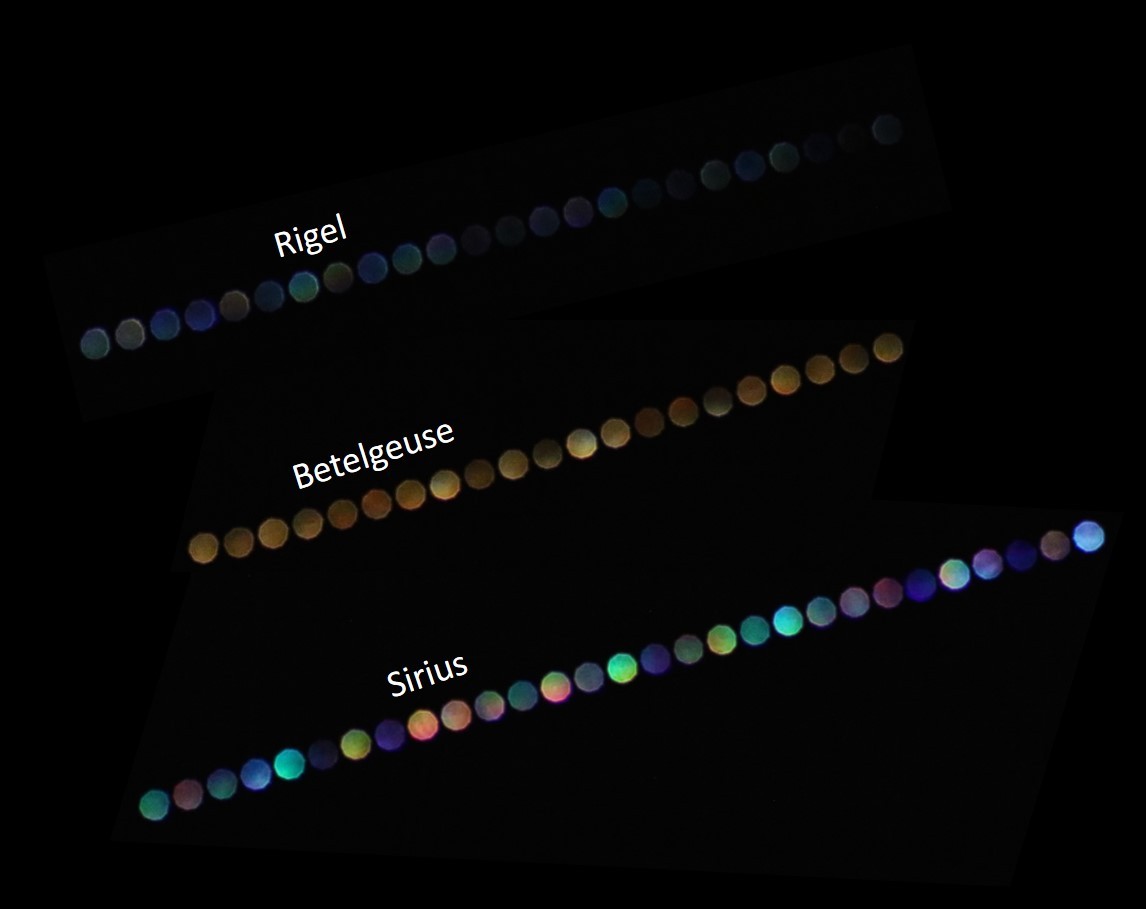If you’ve ever gazed up at the night sky, you’ve likely noticed stars twinkling. This captivating shimmer has fascinated people for centuries, but what causes it? The truth is, stars don’t actually twinkle at all. The twinkling effect is an illusion created by Earth’s atmosphere.
This composite image showcases Rigel, Betelgeuse, and Sirius, demonstrating how atmospheric distortion can cause stars to appear to flicker in different colors. This color variation is captured here by a DSLR camera. Credit: Amanda Cross
The Role of Earth’s Atmosphere in Star Twinkling
Earth’s atmosphere extends thousands of kilometers above the surface, composed of layers of air with varying temperatures and densities. As starlight travels through this turbulent atmosphere, it encounters these pockets of air. The light bends and refracts as it passes from one area of density to another, causing the star’s apparent position to shift slightly and rapidly. This constant shifting creates the illusion of twinkling. The scientific term for this phenomenon is “atmospheric scintillation.”
Atmospheric Scintillation: Why Stars Flicker in Color
Atmospheric scintillation not only makes stars appear to dance but can also cause them to flicker in different colors. As starlight is refracted, different wavelengths of light (corresponding to different colors) are bent at slightly different angles. This can cause the star’s light to appear to change color rapidly, often flickering between red, blue, and other hues. Think of it like looking at an object through a heat haze rising from a fire; the image shimmers and distorts.
Astronomical Seeing: How Twinkling Affects Astronomers
While star twinkling is a beautiful sight for most people, it poses challenges for astronomers. The same atmospheric distortion that causes twinkling also affects the clarity of images seen through telescopes. This blurring and shaking of celestial objects, known as “seeing,” can make it difficult to observe fine details. Astronomers often rate observing conditions based on the level of seeing, hoping for “good seeing” with minimal atmospheric disturbance.
This panoramic view shows the Milky Way (center) along with several planets. Bright Mars appears to the left, dimmer Saturn is in the middle, and bright Jupiter is on the right. The arc connecting these planets outlines the ecliptic plane. Credit: Alan Dyer / Stocktrek Images / Getty Images
Why Planets Don’t Twinkle Like Stars
You might have noticed that planets, unlike stars, generally don’t twinkle. This difference is due to their proximity to Earth. Stars are incredibly far away and appear as tiny points of light. Even slight atmospheric disturbances can significantly affect the path of this light, leading to noticeable twinkling. Planets, being much closer, appear as small disks rather than points. The light reflected from these disks is less susceptible to atmospheric distortion because the light rays from different points on the disk average out, reducing the twinkling effect. Understanding this difference can help you distinguish between planets and stars in the night sky. Planets typically shine with a steady light and follow a predictable path along the ecliptic.
Conclusion: Twinkling Stars and the Earth’s Atmosphere
The twinkling of stars is a captivating phenomenon caused by the interaction of starlight with Earth’s atmosphere. While seemingly simple, this shimmering effect reveals much about the dynamic nature of our planet’s gaseous envelope and the vast distances that separate us from the stars. The next time you see a star twinkle, remember that you’re witnessing a beautiful illusion created by the Earth’s atmosphere.
